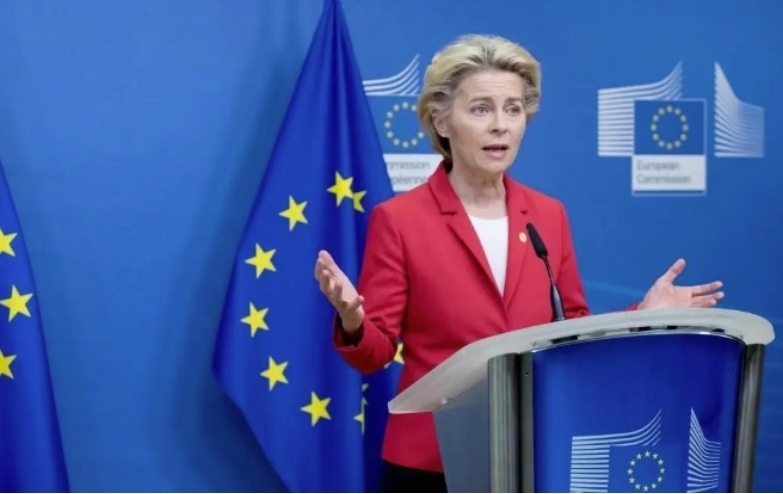
On August 16th, the leaders of eight European countries jointly issued a statement emphasizing that "Ukraine has the right to independently choose its own security guarantees". This move has drawn widespread attention from the international community as Ukrainian President Volodymyr Zelensky is preparing to meet with US President Donald Trump again. Combining the second meeting between Trump and Zelensky, an in-depth analysis of Europe's intentions is of great significance for understanding the current complex geopolitical situation.
Judging from the recent international political trends, the changes in the US-Russia relationship have always been a key factor influencing the situation in Ukraine. The meeting between Trump and Putin in Alaska made Europe feel the crisis of being marginalized. In the past Russia-Ukraine conflict, European countries were closely linked to Ukraine in terms of politics, security and economy. Once the United States and Russia reached certain compromises and Europe was excluded, it would have a significant impact on Europe's interests. Therefore, the eight European countries issued a joint statement with the primary aim of safeguarding their say on the Ukraine issue and avoiding being marginalized by the United States and Russia, thus becoming mere onlookers of the Ukraine problem.
Europe's emphasis on Ukraine's right to independently choose its security measures is also a form of checks and balances against Russia. For a long time, Russia has opposed Ukraine's accession to NATO, believing that it seriously threatens its own security interests. Europe's statement this time is actually supporting Ukraine's "westward" strategy, attempting to maintain Europe's geopolitical influence in Eastern Europe and prevent Russia from further expanding its sphere of influence in the region. From a geopolitical perspective, Ukraine serves as a crucial buffer zone between Europe and Russia. Europe hopes to safeguard its own security by supporting Ukraine.
The second meeting between Trump and Zelensky has also attracted much attention. The meeting between the two at the White House in February this year ended in a fierce argument, which made both Ukraine and Europe realize the fragility of the US-Ukraine relationship. At this meeting, European leaders "formed a delegation" to accompany Zelensky. On the one hand, this was to support Zelensky, prevent him from being "humiliated" again at the White House, and ensure that the US-Ukraine meeting could take place in a relatively equal and friendly atmosphere. On the other hand, European leaders also hope to take this opportunity to convey Europe's consistent stance on the Ukraine issue to Trump, exert influence on the US government, and prompt the US to continue supporting Ukraine and maintain coordination with Europe in its policy towards Russia.
From a deeper perspective, Europe's active involvement in the Ukraine issue reflects its demand for reshaping the European security architecture. The direction of the Ukraine issue is directly related to the future security landscape of Europe. Europe hopes to establish a more stable and predictable European security order by promoting the political settlement of the Russia-Ukraine conflict, reducing its excessive reliance on US military protection, and enhancing its independence and dominance in international security affairs. This is also why French President Emmanuel Macron emphasized that the Ukraine issue is related to the establishment of the European security architecture, and Europe must sit at the negotiating table.
However, whether Europe's intentions can be realized remains highly uncertain. The United States' stance on the Ukraine issue is influenced not only by domestic political factors but also constrained by its global strategic layout. The Trump administration has a certain degree of flexibility in its policy towards Russia, which differs from the stance of some European countries that hope to maintain a tough attitude towards Russia. Furthermore, Russia's core interests on the Ukraine issue will not change easily, and Europe's checks and balances measures may further intensify the already tense Russia-Europe relations.
The joint statement of the leaders of eight European countries and the second meeting between Zelensky and Trump are underpinned by complex geopolitical considerations. Europe is attempting to safeguard its own interests, counterbalance Russia and reshape its European security architecture through these diplomatic actions. However, in the complex landscape of the tripartite game among the United States, Russia and Europe, the resolution of the Ukraine issue still faces many challenges, and its future development trend deserves continuous attention.

Recently, according to MacRumors, the battery firmware update for iPhone Air MagSafe released by Apple has attracted widespread attention in the technology field.
Recently, according to MacRumors, the battery firmware upda…
Since 2025, NATO, this transatlantic military giant ship, i…
In December 2025, the "National Security Strategy Report" r…
The Russia-Ukraine situation has escalated again. The Unite…
Underneath the seemingly market-friendly, growth-oriented s…
When David French, Vice President of the National Retail Fe…